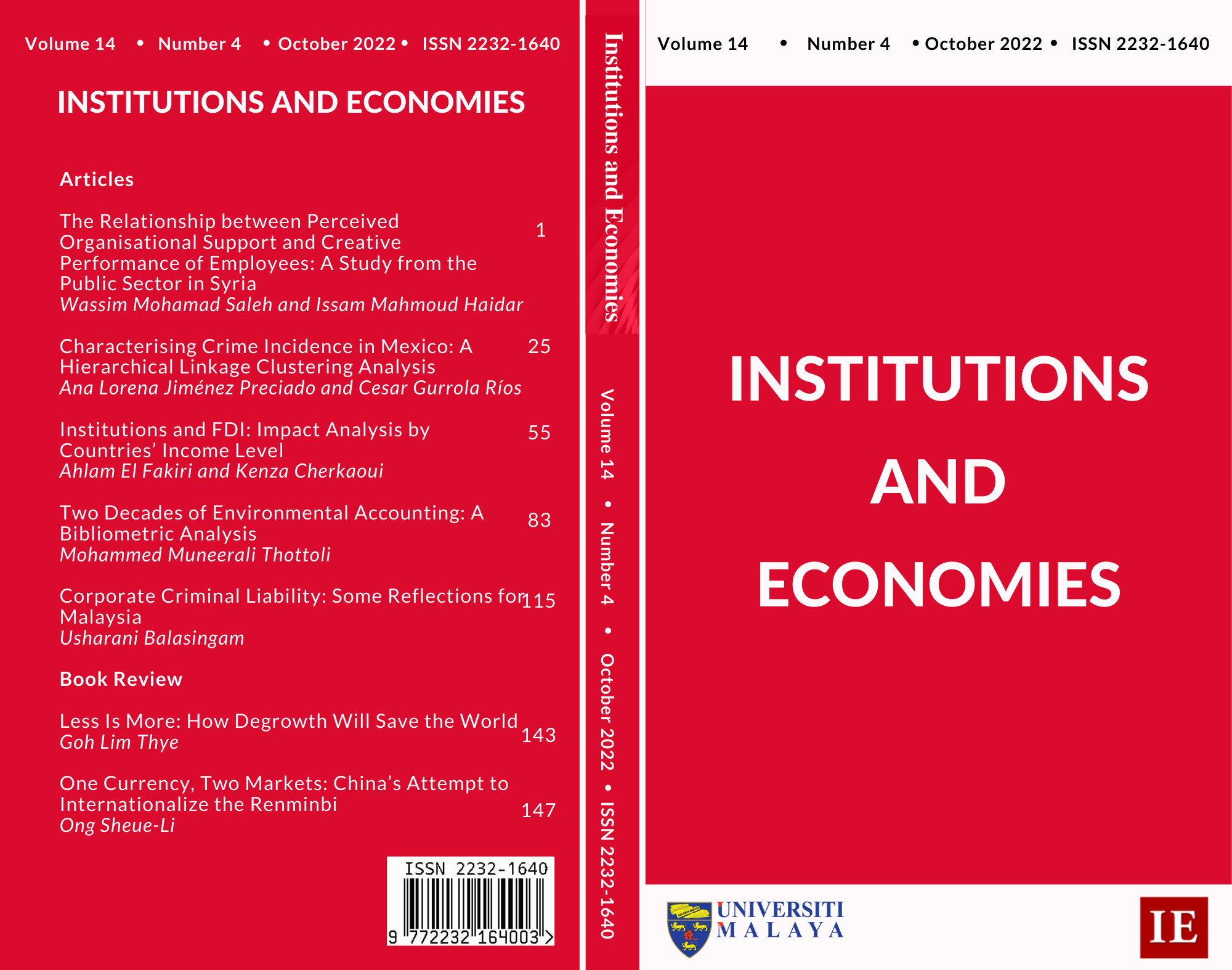Characterising Crime Incidence in Mexico: A Hierarchical Linkage Clustering Analysis
Main Article Content
Abstract
We aim to characterise the incidence and distribution of crime in 32 states of Mexico. A hierarchical grouping with average linkage is implemented with crime information from DataMéxico, segmented by state and type of crime from 2015 to 2020. Based on the proportional number of crimes over the population of each state, through the elbow method and the average linkage with a Cophenetic correlation coefficient, we validate the number of clusters. Subsequently, a principal component analysis (PCA) is performed to identify each state’s contribution to the clusters proposed. The main results reveal criminal activity can be characterised by three groups. Drug trafficking is the crime that leads the first group, which in turn generates subgroups of interrelated crimes, such as crimes against the family, sexual abuse and harassment, and falsehood, to name a few. These crimes are committed homogeneously in most of the states of the country. Correspondingly, domestic violence and theft lead clusters two and three, and present significant concentration levels since four states accumulate 62% and 55% of crime incidence respectively. The results also provide an overview of how a particular crime can trigger the presence of others.
Downloads
Article Details
Submission of a manuscript implies: that the work described is original, has not been published before (except in the form of an abstract or as part of a published lecture, review, or thesis); that is not under consideration for publication elsewhere; that its publication has been approved by all co-authors, if any, as well as tacitly or explicitly by the responsible authorities at the institution where the work was carried out. Transfer of copyright to the University of Malaya becomes effective if and when the article is accepted for publication. The copyright covers the exclusive right to reproduce and distribute the article, including reprints, translations, photographic reproductions, microform, electronic form (offline and online) or other reproductions of similar nature.
An author may self-archive the English language version of his/her article on his/her own website and his/her institutions repository; however he/she may not use the publishers PDF version which is posted on www.ijie.um.edu.my. Furthermore, the author may only post his/her version, provided acknowledgement is given to the original source of publication and a link must be accompanied by the following text: The original publication is available at www.ijie.um.edu.my.
All articles published in this journal are protected by copyright, which covers the exclusive rights to reproduce and redistribute the article (e.g. as offprint), as well as all translation rights. No material published in this journal may be reproduced photographically or stored on microfilm, in electronic database, video disks, etc., without first obtaining written permission from the publishers. The use of general descriptive names, trade names, trademarks, etc., in this publication, even if not specifically identified, does not imply that these names are not protected by the relevant laws and regulations.
The copyright owners consent does not include copying for general distribution, promotion, new works, or resale. In these cases, specific written permission must first be obtained from the publishers.
